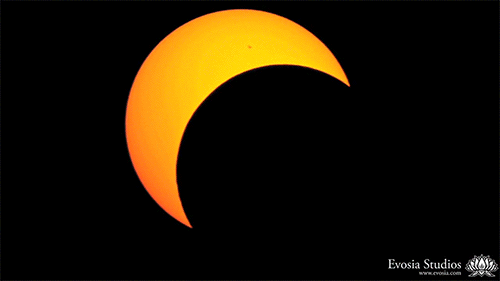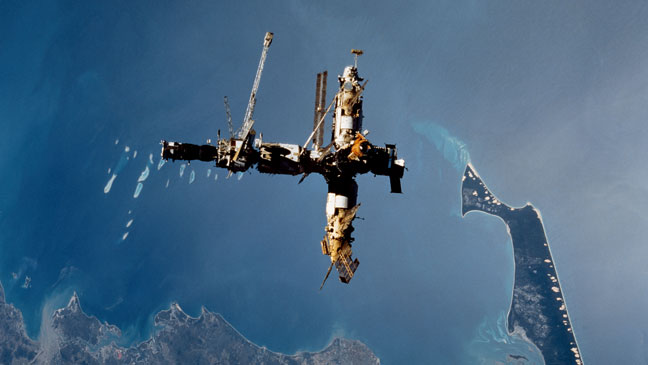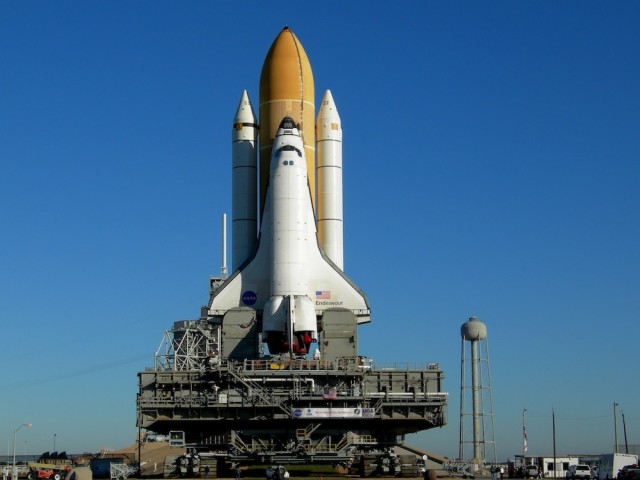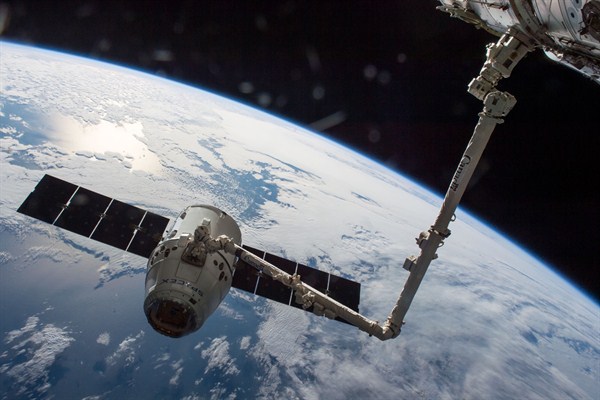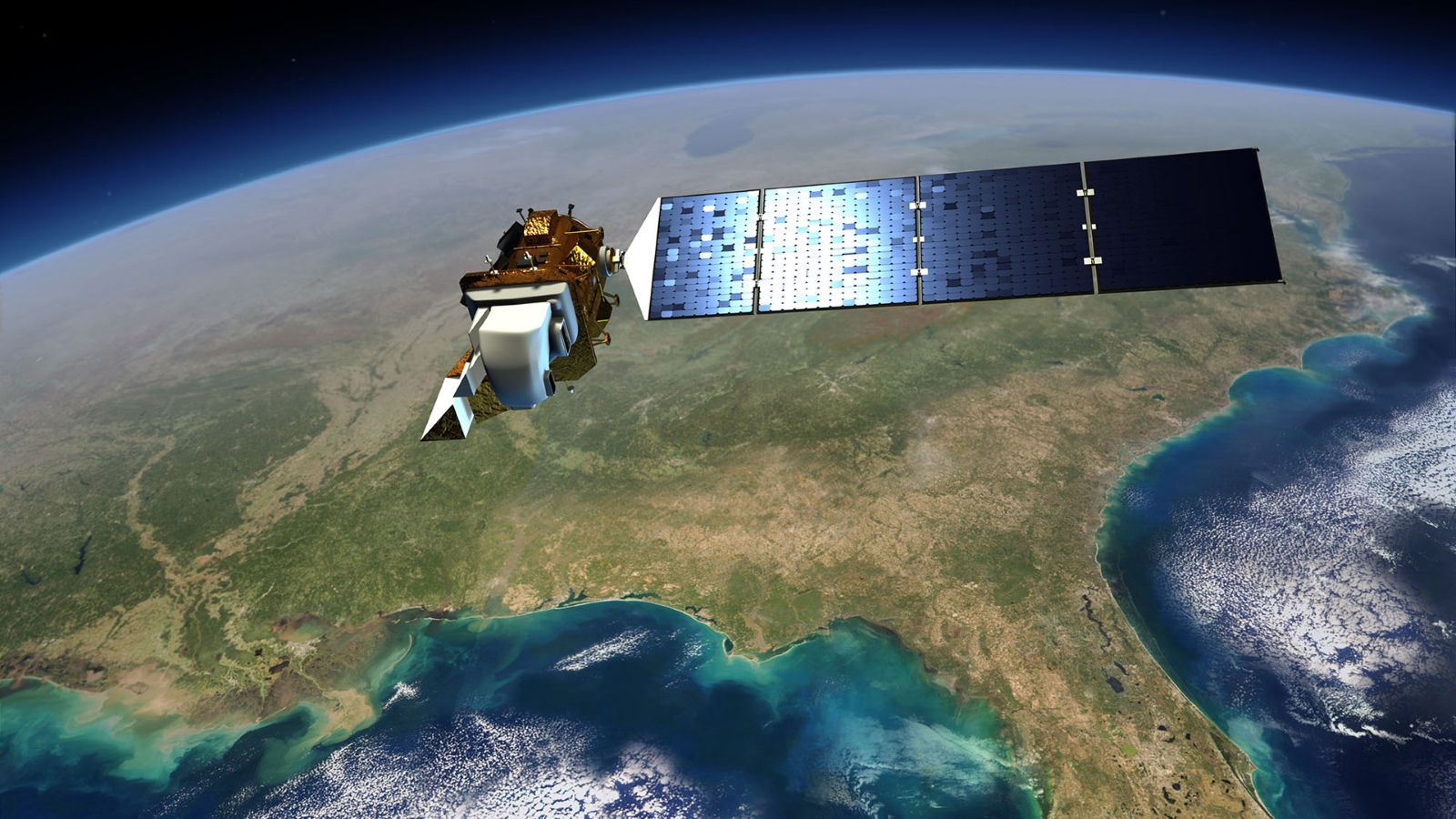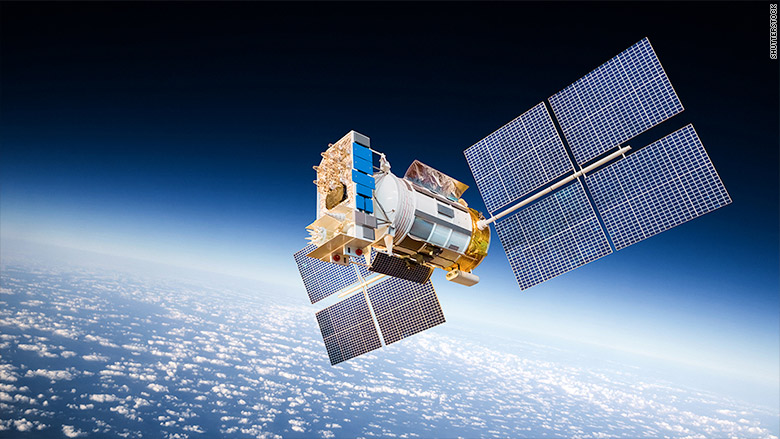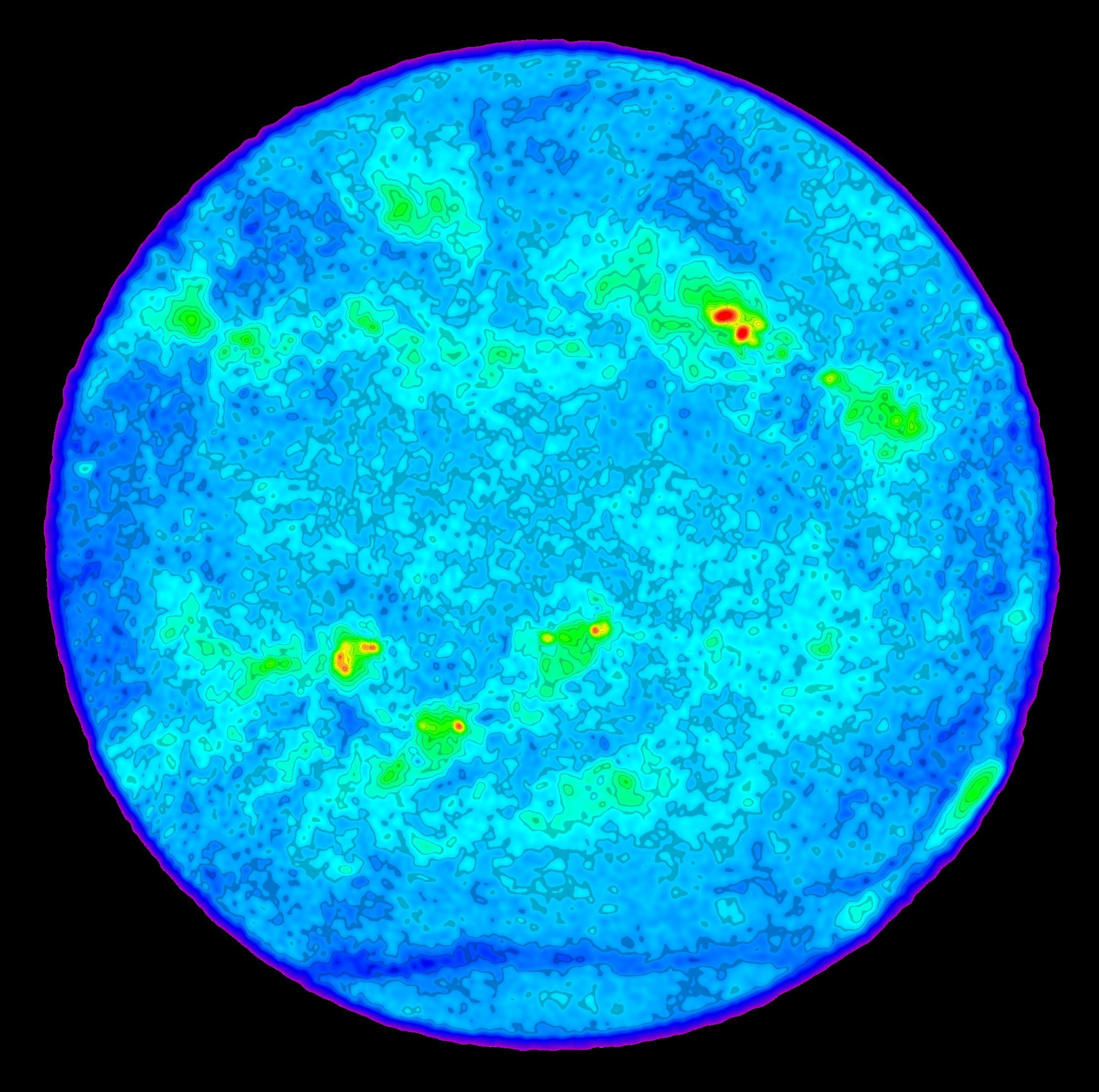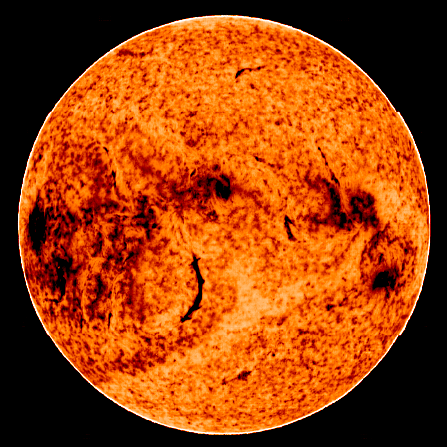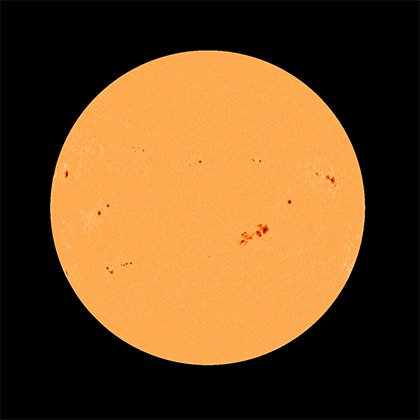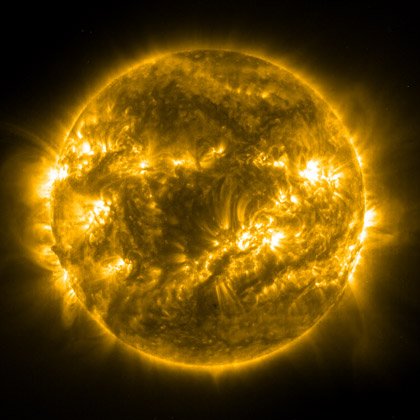Space Exploration
THE PILLARS OF CREATION - 7000 LIGHT YEARS AWAY
Human understanding of both Earth and space has changed over time.
Celestial bodies for years have:
fuelled human imagination
marked the passage of time
foretold the changes in seasons
passed through generations & cultures, often as legends
Tracking Cosmological Events
NOTE THE NORTH POLE - COMPLETELY DARK IN WINTER, COMPLETELY LIGHT IN SUMMER
Solstice :
Either of two times in the year when the Sun reaches its highest or lowest point in the sky at noon
In the Northern hemisphere, the summer solstice occurs near June 21 (longest day of the year) and the winter solstice occurs near December 21 (shortest day).
early civilizations created accurate ways to predict the timing of the solstice Ex. Stonehenge
Equinox:
Either of the two times a year (once in spring and once in autumn) when the Sun crosses the equator and day and night are of equal length
Usually land on or about March 21 and September 23.
early civilizations created accurate ways to predict the timing of the equinox Ex. Mayans of Central America built towers in Chichen Itza
Models of Planetary Motion
Generations have tried to explain the motion of the stars and planets.
GEOCENTRIC MODEL - ALL LIFE REVOLVES AROUND EARTH
Geocentric Model
Aristotle : 2000 years ago
Earth is at the centre with planets, sun and moon orbiting in concentric spheres; while stars were attached firmly to a celestial sphere.
Had little technology, but used mathematics to explain it.
Heliocentric Model
THE PLANETS ORBIT AROUND THE SUN, WHICH ALSO HAPPENS TO BE ORBITING AROUND THE MILKY WAY GALAXY
1st Nicholas Copernicus : 1530
Sun is at the centre with planets & Earth orbiting around it.
2nd Galileo Galilei : 1620
Used a telescope to help support the theory.
3rd Johannes Kepler : 1621
Used math to determine that the orbits were ellipses, not circles.
This is the basic model of our solar system we use today.
Ellipse:
An oval formed around two foci (a circle is formed around one focus); the orbital paths of planets travelling around the sun are ellipses.
Discovery Through Technology
Human understanding of space and Earth has progressed due to the improvement of tools to observe, record, measure, and analyze what we see.
The Astronomer’s Tools
Examples of technology used through Earth history.
Sundials – measure the passage of time
Quadrant (Egyptian) – measure star’s height over the horizon
Astrolabe (Arab) – measure the latitude of a star
Telescope – create accurate maps of our solar system (still improving today)
Merkhet (Egyptian) – chart astronomical positions tells time of day
Cross-staff – measure the angle between the moon and any star
AN ASTROLABE MEASURES A STAR'S ALTITUDE
The Immensity of Distance and Time in Space
When measuring distances one must use the appropriate units.
Astronomical Unit (AU):
A measure of distance used to describe the position of planets relative to the Sun; 1 AU is equal to the average distance from the centre of Earth to the centre of the Sun (149 599 000 km).
Light Year :
The distance that light travels in 1 year (approximately 9.5 trillion km); used to measure distances between stars and galaxies.
The vast distances between stars and Earth even takes time for light to travel. So when light from a distant star reaches our eyes it could be thousands of years old.
The Distribution of Matter in Space
What is a Star?
A star is a ball of gas (mainly hydrogen) that is squeezed by gravity so much that the squished atoms produce energy that radiates outwards in the form of light and heat.
Billions upon billions of stars in the universe (Our guess is 200,000,000,000,000,000,000,000 no joke)
Stars vary greatly in their characteristics: size, density, colour, & brightness.
Hertzsprung-Russell diagram
Compares surface temperature with brightness, it can be used to understand the evolution of stars
Main Sequence
On the Hertzsprung-Russell diagram, the stage in the life cycle of most stars during which they produce energy by converting hydrogen into helium; main sequence stars including the Sun, are in a stable state.
The Birth of a Star
Interstellar Matter :
The gases and dust that exist in the space between stars.
Gravity attraction by atoms and dust grains in nebulae pull other particles in until it starts collapsing into a spinning ball.
As more material is drawn in the temperature increases until it reaches 10 000 000 degrees Celcius where hydrogen changes to helium in a process called fusion, releasing geat quantities of energy and radiation.
Nebula:
Vast clouds of gas (mostly hydrogen) and dust in space, where stars form; nebula (singular). Smaller in size than a galaxy.
Composed of :
75% H
23% He
2% O, N, C, Si
FORMATION OF A PROTOSTAR
Protostar :
A contacting mass of gas in the first stage of a star’s formation.
The Life and Death of a Star
LIFE SEQUENCE OF A STAR
The type of star depends on its mass:
1) Sun-like Stars – one of the two main types of stars that can form
2) Massive Stars – one of the two main types of stars that can form
Gravity from the star literally fuses nuclei together, this causes a lot of energy released outward ( it takes 32,000 years for radiation caused by fusion to exit the sun)
Outward pressure of radiation is counteracted by gravity: so the star is STABLE.
Over time the hydrogen fuel will be used up, the stable state shrinks, heating the helium core, fusing it to carbon and other elements, gravity causes the star to contract, while the nuclear reactions on the outer layers cause it to become larger.
Red Giant – the stage in the life-cycle of a Sun-like star during which the star increases in size and becomes very bright.
Red Supergiant – the stage in the life-cycle of a massive star during which the star increases in size and becomes very bright.
The next stage for a Sun-like star is when the fusion finally stops because fuel runs out. With no reactions going, gravity takes control and the star collapses on itself, over the years the star will cool completely to become a white dwarf and than a black dwarf.
White Dwarf – one of the latter stages in the life cycle of a Sun-like star during which the star collapses; white dwarfs are hot but very faint.
Black Dwarf – the final phase in the life cycle of a Sun-like star.
Unlike a Sun-like star, a massive star after the collapse due to the gravity does not form a stable white dwarf, but, instead, there is a sudden outgoing shock wave, which causes the star to explode: supernova. After a supernova either a neutron star or a black hole is created.
Supernova – an enormous explosion that marks the death of a massive star.
Neutron Star – a small, super-dense remnant of a supernova.
Black Hole – a super-dense remnant of a supernova; an object around which gravity is so intense that even light cannot escape.
Star Groups
Constellations:
Groupings of stars that form patterns in the night sky (eg. Ursa Major); officially, there are 88 constellations.
Asterism:
A distinctive star grouping that is not one of the 88 recognized constellations but still popular (ex. The Big Dipper is part of Ursa Major)
Galaxies
Galaxy :
A grouping of millions or billions of stars, gas, and dust held together by gravity. 3 types:
1) Spiral (eg. Milky Way)
2) Elliptical (older stars)
3) Irregular (no notable shape & smaller)
Our Solar Neighbourhood
The birth of our solar system is explained by the Protoplanet Hypothesis:
1) A cloud of gas and dust in space begins swirling
2) Most of the material (more than 90%) accumulates in the centre, forming the Sun.
3) The remaining material accumulates in smaller clumps circling the centre. These form the planets.
The Sun
The sun is 109 times wider than the Earth (like a pea vs a giant pumpkin)
Surface temperature : 5500 degrees Celcius (that can melt daimonds)
Core temperature : 15 000 000 degrees Celcius (hotter than a pizza pocket)
The sun releases charged particles called solar wind (the Curiosity rover measured about 30 x-rays worth of radiation from a single solar storm hitting Mars in 2024)
Solar Wind:
Streams of electrically charged particles discharged by the Sun in every direction; solar wind passes Earth at nearly 400km/s
The Planets
Each planet has its own unique characteristics, but can classified into two groups:
Terrestrial :
Inner planets, smaller, rockier composition.
Jovian :
Outer planets, larger, gaseous.
Other Bodies in the Solar System
Asteroids:
Small, rocky or metallic bodies orbiting the Sun and lying mainly in a narrow belt between Mars and Jupiter.
Comets :
A celestial body composed of dust and ice that orbits the Sun; it has a bright centre and long faint tail that always points away from the Sun.
solar winds from the sun push the tails away and at long distances.
it can orbit for extended and predictable periods of time (eg. Halley’s = 76 years)
Meteoroids:
A solid body, usually a fragment of rock or metal, travelling in space with no particular path.
Meteor:
A meteoroid that enters Earth’s atmosphere, where the heat of friction causes it to glow brightly.
Meteorite:
The remains of a meteor that do not burn up completely and so last long enough to hit Earth’s surface.
Tracking Objects in the Solar System
Since most celestial bodies move in an elliptical orbit humans can accurately predict when solar and lunar eclipses will occur, or when comets will pass by.
Solar eclipse:
When the moon lines up directly between the Sun and the Earth, and casts a shadow on the Earth.
Lunar eclipse:
When the Earth lines up directly between the Sun and the moon, and casts a shadow on the moon.
Describing the Position of Objects in Space
To locate the position of an object in space we need two measurements:
Azimuth:
The angle between the most northerly point of the horizon and the point directly below a celestial body; also the horizontal angle or direction of a compass bearing. (0 degrees is due north)
Altitude:
The height of a celestial body above the horizon, ranging from 0 at sea level to 90 degrees straight up.
Zenith:
The highest point in the sky directly overhead.
Determining the Motion of Objects in Space
Stars move very little in the sky.
Planets orbit can be observed quite easily.
Ecliptic :
The apparent path of the Sun and planets through the stars during the year, as viewed from Earth. Using the celestial sphere to pin-point where it is.
Space exploration
Science and Technology are crucial to find answers to the biggest challenges of exploring space:
To go fast enough to achieve orbit around the Earth or break fee of Earth’s gravity and travel to other planets.
To keep equipment operating in the extreme environment of space.
To transport people out and back safely.
Getting There: Technologies for Space Transport
Several different technologies have been developed to be used in space.
Satellites – for communication, navigation, research, & weather forecasts.
Space shuttles
Planetary probes that fly by planets
International space station (ISS)
To get into space an object must reach at least 28 000 km/h to overcome earth’s gravity.
The Achievements of Rocket Science
Complex rockets have simple origins.
Archytas (400 BC) - escaping steam used to propel a model pigeon along wires.
Chinese (100 AD) – gun powder propelled arrows for battle
Robert Goddard (1926) - creates a liquid fuel rocket ascending 41 feet (3 storey building)
October 4, 1957 – Soviet Union launched Sputnik (satellite) into space and into orbit around the Earth: 1st space vessel ever.
Second vessel Soviet Union sent up had a dog in it, which lived for a few hours: set up path for human space travel.
The Science of Rocketry
Relies on the basic fundamental law of physics: for every action there is an equal and opposite reaction.
Compressed gas in a container is released from one end, thereby propelling the container in the opposite direction. (eg. Releasing an inflated balloon)
Three basic parts of a rocket:
Structural and mechanical elements:
Everything from the rocket itself to engines, storage tanks, and the fins on the outside.
Fuel:
Can be any number of materials, including liquid oxygen, gasoline, and liquid hydrogen. The mixture is ignited in a combustion chamber, causing the gases to expand and leave as exhaust.
Payload:
Refers to the materials needed for the flight, including crew cabins, food water, air and people.
The Future of Space Transport Technology
Ion Drives
Uses xenon gas, instead, of chemical fuel.
Xenon gas is electrically charged, accelerated, and then emitted as exhaust, thereby pushing the spacecraft in the opposite direction.
Although it is substantially weaker (10 000 times), it can last an extremely long time, which in space can lead to great speeds with little fuel use.
Solar Sails
Is similar to propel a boat using wind sails, but, instead, of harnessing wind currents the spacecraft harnesses electromagnetic energy in the form of photons emitted by the sun.
The carbon fibre sails are stimulated photons hitting the sail.
Shuttles, Space Probes, and Space Stations
Shuttles:
Transport personnel and equipment to orbiting spacecraft.
Space probes:
Contains instrumentation for carrying out robotic exploration
Space stations:
Orbiting spacecraft that have living quarters
Canada Arm:
Robotic arm used to launch satellites and other payloads, or to inspect space shuttle damage
The Next Step
A space journey would be much more successful if the spacecraft did not have to travel through the atmosphere, but, instead, start from a space station or the Moon.
16 nations are working on a major space station that would enable future astronauts to work for extended periods, and launching interplanetary rockets.
There are also plans by private companies to establish colonies on mars (ie. SpaceX)
Surviving There: Technologies for Living in Space
NASA TEST FLIGHT FOR MARS - A DUMMY IS PLACED INTO THE COCKPIT OF A SPACECRAFT WITH VARIOUS SENSORS TO MEASURE THE DIFFERENT FORCES & TEMPERATURES ASTRONAUTS MUST ENDURE DURING THEIR JOURNEY..
Humans have been sent to the moon and back safely.
A future plan is now to send humans to Mars and back, but it will not be a quick and simple trip, it will take approximately 2 – 3 years.
Environmental Hazards
Space does not have the gases in the atmosphere like Earth has to control extreme temperatures, provide the pressure to regulate our heartbeats, or have any air or water.
Temperatures vary from - 270 celsius to 120 celsius if facing the sun light
Drop in pressure on body causes the bends, heartbeat can increase
No oxygen in outer space, needs oxygen tank
Need to clean carbon dioxide from environment using scrubbers
No water in space, need to conserve and recycle
Constantly bombarded with radiation
WITH ENOUGH ENERGY A MICRO-METEORITE CAN GO RIGHT THROUGH A HUMAN BODY OR EVEN A SPACE STATION
Psychological Challenges to Confined Living
It can be very psychological difficult for people to live in a small confined area for up to 2 years.
Living with the same people for up to a year
Lack of communication with family members and friends on Earth
The Body and Microgravity
Gravity :
The force of attraction between masses.
Microgravity:
The condition in which the gravitational forces that act on a mass are greatly reduced. Almost zero gravity!
The human body is used to living under a certain amount of gravity. If gravity changes the body will change too, the long-term difficulties of these changes must be explored before interplanetary travel should be attempted.
Bones expand and become brittle
Muscles weaken
Heart works less hard to pump
The Space Suit
Each suit is custom made for the astronaut, and must be able to provide everything the astronaut needs to survive:
air
water
heating system
cooling system
portable toilet
A Home in Space
Any home created in space must be able to provide all a human needs including its own energy source to maintain it. Some needs that must be met are clean water, breathable air, temperature, and air pressure.
Recycling
The International Space Station will have a system that can recycle almost 100% of the water in the station.
The Environmental Control and Life Support System has several functions:
Recycling wastewater (including urine) to produce drinking water.
Using recycled water to produce oxygen.
Removing carbon dioxide from the air.
Filtering micro-organisms and dust from the air.
Keeping the air pressure, temperature, and humidity stable.
Producing Oxygen
Using the process of electrolysis, which uses electricity to split water into hydrogen and oxygen, the oxygen would then be used and the hydrogen released.
Using Space Technology to Meet Human Needs on Earth
Many of the technologies we use today were originally developed for use in space
Satellites :
A small body that orbits a larger one; satellites may be natural, such as a moon orbiting a planet, or artificial, such as a spacecraft put into orbit around Earth by humans for research or communication purposes.
These relatively small objects are loaded with electronic equipment, digital imaging apparatus, and other instrumentation.
Some of the major uses are communication, observation, weather forecasting, predict magnetic storms, and determining a location on Earth.
Satellites that have an orbit farther from Earth, the greater distance it can transmit signals
1 - Communication Satellites
Telephones use to function by hard-wire connection. With satellites countries can now use digital, wireless connections to communicate.
2 - Remote Sensing Satellite
These satellites orbit earth at lower altitudes to take photographs of the physical terrain and then send them back to earth to be studied. (ex. google maps)
3 - Tracking Satellite (GPS - Tracking Devices)
Global Positioning System (GPS) – a device connected to 24 satellites that enables people to know exactly where they are within a few meters anywhere on Earth.
4 - tracking Satellite (for research)
Some satellites are designed to move at the same rate the Earth’s spins, this is called a geosynchronous orbit, and allows the satellite to observe the same area of Earth 24 hours a day. This is extremely useful for weather satellites.
Two of Canada’s satellites, LANDSAT and RADARSAT do not maintain a geosynchronous orbit, and, instead, have other functions:
follow ships at sea
monitor soil quality
track forest fires
report on environmental change
search for natural resources
HOW A GPS TRACKS A POSITION
DIFFERENT TYPES OF TELESCOPES advance our understanding of space.
A telescope is a devices that magnifies visible light rays from far distances
Galileo is credited with using the first telescope to study the sky.
Telescopes are light collectors, the more light they collect the clearer the image seen.
There are two types of telescopes:
Refracting Telescope :
A type of optical telescope that uses two lenses to gather and focus light. Problem is there is a limit on how powerful they can be.
Reflecting Telescope :
A type of optical telescope that uses mirrors instead of lenses to gather and focus light. Uses a finely polished concave mirror to collect even the most faint light.
Many telescopes use spin casting to produce large (6m diameter) cheap mirrors quickly.
The newest innovation for ground-based reflecting telescopes is the use of segmented mirrors, which takes several smaller mirrors to form one. Some reach as large as 10 m.
Spin casting a large reflecting telescope.
Interferometry:
The technique of combining two or more telescopes to increase its image resolution.
Ex. Keck I and Keck II telescopes in Mauna Kea in Hawaii can be combined to form a telescope that can see the greatest distance with the most clarity of any Earth-based observatory.
KECK 1 & 2 LIVE ON THE SUMMIT OF MAUNA KEA A DORMANT VOLCANO IN HAWAII - SO HIGH UP THE STARS DON’T TWINKLE!
The Hubble Space Telescope
Since it orbits the Earth the weather can not interfere with the image.
Is a reflecting telescope
Modular design, which allows for easy repairs without having to stop its functioning.
The telescope can be turned so it is focused on something else, and it is all controlled from Earth.
THE HUBBLE TELESCOPE IS A SATELLITE WITH A REFLECTING TELESCOPE, IT IS KNOWN FOR TAKING PICTURES OF FAR SPACE (SUCH AS THE PILLARS OF CREATION)
Using Technology to See Beyond the Visible
Observable light is a type of radiation. It is the only energy humans can actually see. There are many more forms of radiation that are invisible to the human eye.
Electromagnetic Energy :
Radiated energy that travels at the speed of light (300 000 km/s) the form of energy is determined by the wavelengths and frequencies.
Wavelength :
The distance from one point on a wave (such as the crest) to the same point on the next wave.
Objects in space like stars and galaxies emit not only visible light, but also other forms of radiation with different wavelengths (ex. infrared, radio, and x-rays)
The various forms of radiation emitting from the sun: radio waves, infrared waves, red light, ultra violet radiation waves, and x ray waves. The sun does produce gamma radiation however it is downgraded into lower energy radiation by the time it leaves the sun’s atmosphere.
Radio Telescopes
Scientists can also study radio waves and get information from it. The signals are mapped through the use of sophisticated electronics and computers.
Radio Telescopes :
A telescope system that collects and analyzes radiation in the radio frequency range from stars and other bodies in space.
Advantages of radio telescopes:
1) Not affected by weather, pollution, or atmosphere.
2) Can be detected during the day and night.
3) Can detect neutral hydrogen and map the universe.
Must have a large dish and antenna to collect the information. The antenna intercepts, focuses, and transforms the waves into an electrical signal that is fed into a computer for interpretation.
Radio Interferometry
Several radio telescopes can be combined to improve their performance and and increase the accuracy of their radio images.
The greater the distance telescopes the more accurate they can be.
They can also be arranged in groups called an array.
LARGE ARRAY IN SOCORRO, NEW MEXICO, TWENTY SEVEN 25M TELESCOPE IN A Y PATTERN
Viewing More Than What the Eye Can See
Scientists collect and study emissions other than visible light from celestial bodies, some can be very valuable.
Black holes – emit x-rays
Planets of other stars – emit radio waves
Universe formation – emitted microwaves
Space Probes
Space Probes :
Unmanned satellites or remote-controlled “landers” used to explore areas or objects in space that are too difficult or dangerous to send humans to.
Space probes explore and give insights in to the environments of different planets.
Space probes have landed on Mars, the next step is a manned mission to Mars that could take up to 3 years!
Cassini Probe
Mars Rover I - Curiosity
Mars Rover II - Opportunity
Using Technology to Interpret Space
THE UNIVERSE IS MIND BLOWINGLY BIG - BUT SCIENTIST CAN STILL LEARN A LOT JUST BY OBSERVING THROUGH TELESCOPES
By using telescopes scientists can learn great amounts of information.
Distance
Composition
Movement of stars
Measuring Distance
Triangulation:
A method of indirectly measuring distance by creating an imaginary triangle between an observer and an object whose distance away is to be estimated.
HOW A PARALLAX WORKS
Parallax:
The apparent shift in position of a nearby object against a distant background when the object is viewed from two different positions.
Used by scientists to determine what angles to use when they triangulate the star’s distance from Earth.
The longer the baseline the more accurate the distance, so the best distance is the Earth’s diameter (taken every 6 months).
Determining a Star’s Composition
White light is a combination of all colours, which can be seen by being shone through a prism, thereby showing the visible spectrum.
Spectroscope :
An instrument used by astronomers to observe and measure the spectrum of a star.
When astronomers first began refracting the light from stars to examine it, they noticed that different stars had dark bands in distinct sequences and thicknesses on their spectra.
Therefore, each element creates its own black-line “fingerprint.” Then the spectra are compared to known element spectrums to determine its composition.
This is called Spectral Analysis:
Determining a Star’s Direction of Motion
Doppler effect :
The apparent change in frequency of sound, light, and other waves as the observer and the wave source move towards or away from each other; also referred to as “Doppler shift.”
Examples include:
Is demonstrated by the change in pitch as a moving vehicle moves towards an observer and then moves away.
Radar guns to gauge speed
Bats use of echolocation!
In terms of star direction, it is not based upon pitch, but, instead, based upon whether the dark lines are closer to the blue end or the red end.
Dark lines towards blue end = approaching star
Dark lines towards red end = receding star
The amount of the shift = speed of star
Application – radar gun used by police to determine a car’s speed.
Society and the environment are affected by space exploration and the development of space technologies.
There are many important issues when dealing with space exploration.
Transferring science & technology to everyday use on Earth
Dangers of life in space (ex. lack of atmosphere)
Who owns what in space?
Who is responsible for keeping space clean
How much can we spend when millions suffer on Earth
The Risk and Dangers of Space Exploration
There are many physical, economical, environmental, and psychological risks and dangers with space exploration. Every plan must be carefully analyzed to reduce the risks of any operation in space.
The Dangers of Manned Space Travel
There are several dangers of manned spaced travel.
Strapping a human to hundreds of tonnes of highly explosive fuel.
Floating debris & meteorites in space
Solar flares (coronal mass ejection) – radiation from the sun
Cosmic radiation from Milky Way and other galaxies
Re-entry path into Earth’s orbit
THE AMOUNT OF OBJECTS ORBITING EITHER - PLEASE NOT THIS IS NOT TO SCALE, THE OBJECTS ARE MUCH, MUCH, MUCH, SMALLER. OBJECT SIZE IS EXAGGERATED TO SHOWCASE THE AMOUNT OF JUNK IN SPACE.
Space Junk :
All the pieces of debris that have fallen off rockets, satellites, space shuttles, and space stations and remain floating in space.
These pieces of junk can remain orbiting Earth for thousands of years.
Space junk re-entering Earth’s atmosphere can cause damage.
Ex. Nuclear-powered Soviet satellite leaked radiation and debris over 124 000km² of land before landing in Great Slave Lake in Canada. (cost of clean-up = $15 million)
Due to the speed that the debris travels at, 20 000 km/h, they can cause catastrophic damage if they were to collide with something, even the smallest object.
Canadian Contributions to Space Exploration and Observation
Canadarm is a robotic arm that Canada created to be used on the Columbia space shuttle, and is very useful to fix and retrieve objects in space.
Canada launched Anik 1 in 1972 to be the 1st country in the world to broadcast television from a satellite. They are leaders in communication satellite technology.
The next generation is Canadarm 2, which will be on he International Space Station, and be much more versatile and reach every aspect of the station.
Issues Related to Space Exploration
Ongoing debate about the billions of dollars spent on space programs.
The Pros and Cons of Space Exploration
Con - How can we justify spending billions of dollars of space exploration when there are so many problems to be solved on Earth.
Pro - By exploring space we could find new solutions to the problems on Earth.
Pro – As the world’s population increases there will be an increased need for more space and new sources of resources.
The Potential Value of Space’s Resources
There are 2 valuable economic reasons for space exploration:
1) Limitless mineral resources in asteroids or surrounding planets.
Ex. 200 000-t asteroid would yield $350 billion worth of mineral resources
2) Finding resources in space would save humans having to ship them up through Earth’s atmosphere.
Ex. Moon has hydrogen = spacecraft fuel / oxygen = life support / both = water
Political, Ethical, and Environmental Issues
If the questions don't show here's the link : press here
















